Mary Anne Yarde's Blog: The Coffee Pot Book Club , page 56
November 11, 2020
Welcome to Day #3 of the blog tour for - Three Monkeys (DCI Jack Callum Mysteries Book 1) by Len Maynard #HistoricalFiction #Crime @len_maynard @LombardEmma
 Three Monkeys(DCI JACK CALLUM MYSTERIES BOOK 1)BY LEN MAYNARD
Three Monkeys(DCI JACK CALLUM MYSTERIES BOOK 1)BY LEN MAYNARD
 OCTOBER 28TH – DECEMBER 30TH 2020AMAZON UK • AMAZON US
OCTOBER 28TH – DECEMBER 30TH 2020AMAZON UK • AMAZON USPublication Date: 22nd July 2020
Publisher: Sharpe Books
Page Length: 270 Pages
Genre: Historical Crime
1958.
A girl’s body is found in Hertfordshire.
Her eyes and mouth have been sewn shut. Candle wax has been poured into her ears to seal them.
DCI Jack Callum, policeman and dedicated family man, who cut his teeth walking the beat on the violent streets of London, before moving his family away from the city, to a safer, more restful life in the country, leads the investigation into this gruesome crime that shatters the peace of the sleepy English town.
Images of three monkeys are sent to the police to taunt them: see no evil, hear no evil, speak no evil. Something more sinister than a mere isolated murder seems to be going on as more victims come to light.
Who is doing this and why?
At the insistence of the first victim’s father, a local dignitary, officers from Scotland Yard are brought in to bring about a speedy conclusion to the case, side-lining Jack’s own investigation.
In a nail-biting climax, one of Jack’s daughters is snatched. Before she can become the next victim, Jack has to go against the orders of his superiors that have constantly hampered his investigation, and risk his own career in an attempted rescue at the killer’s own home.
ABOUT THE AUTHOR

Len Maynard was born in North London in 1953.
In 1978, a book of short ghost stories, written in collaboration with Michael Sims, was published by London publisher William Kimber. For the following forty years the pair wrote ten more collections of ghost stories before moving into novels in 2006, completing over thirty more books, including the successful Department 18 series of supernatural/crime crossover novels as well as several standalone novels and novellas in the supernatural and crime genres. Always a keen reader of crime novels, and with a passion for the social history of the twentieth century it was fairly inevitable that, when he decided to branch out and write under his own name, some kind of combination of these two interests would occur. The six DCI Jack Callum Mysteries were the result of several years of total immersion in the world he created for Jack Callum, his family, his friends (and enemies) and his work colleagues. He has also written a trilogy of adventure thrillers set in the Bahamas (also available from Sharpe Books) He is currently at work on the seventh book in the DCI Jack Callum series.
Today we are over on Emma Lombard's Official Blog for a sneak-peak between the covers of this fabulous book!
Click HERE!


November 10, 2020
#BookReview — The Last Blast of the Trumpet (Book 3 of the Knox Trilogy) by Marie Macpherson #HistoricalFiction #MaryQueenOfScots @Scotscriever @PenmorePress1

The Last Blast of the Trumpet
(Book 3 of the Knox Trilogy)
By Marie Macpherson
Publisher: Penmore Press
Series: The Knox Trilogy
Print Length: 409 Pages
Genre: Historical Fiction / Biographical Fiction
Conflict, Chaos and Corruption in Reformation Scotland.
He wants to reform Scotland, but his enemies will stop at nothing to prevent him.
Scotland 1559: Fiery reformer John Knox returns to a Scotland on the brink of civil war. Victorious, he feels confident of his place leading the reform until the charismatic young widow, Mary Queen of Scots returns to claim her throne. She challenges his position and initiates a ferocious battle of wills as they strive to win the hearts and minds of the Scots. But the treachery and jealousy that surrounds them both as they make critical choices in their public and private lives has dangerous consequences that neither of them can imagine.
In this final instalment of the trilogy of the fiery reformer John Knox, Macpherson tells the story of a man and a queen at one of the most critical phases of Scottish history.

‘Now’s the time to break from the fetters of Rome, brother. Scotland is on the brink of civil strife. We’re in dire need of a skipper to take the helm…’
Joshua may have only needed a trumpet to bring down the walls of Jericho, but Scotland was no Jericho and John Knox was no Joshua. Knox does have the one thing that Joshua did not though, he has a pulpit. It is here, in the church, before his congregation that Knox will draw the battle lines. He will fire up his congregation until the very demons of Hell will fear to stand against them, to stand against him. Nothing will stop his dream from coming to fruition, and no one will get in his way—not even a young and charismatic queen.
With the tragic death of Francis II, Mary, the former Queen of France, has no choice but to return home. But the kingdom of her birth is a land in crisis. Mary must be careful, for her throne is surrounded by vultures desperate to profit from her ruination, and there are many who would rejoice if she were to fall from grace. None more so than Knox. Mary does not fear Knox, but she does fear the power of his ideas. Scotland needed stability now more than ever, and therefore she is willing to listen to Knox and to find a mutual agreement in which everyone gets a little of what they want.
Knox, however, will not bow down to a papist queen. There is no other way but his way, and it would be wise of Mary to remember that…
The Last Blast of the Trumpet (John Knox Trilogy Book 3) by Marie Macpherson is a Historical Fiction masterpiece.
Macpherson’s careful use of foreshadowing builds suspense throughout this novel, which imbues it with an atmosphere that can only be described as hauntingly beautiful. As Macpherson asks those who are long dead to breathe again, to experience the grandeur and the horrors once again, one cannot help but feel compassion for their plight. To be stabbed 57 times, or to be faced with a corrupted form of justice, and to be condemned for nothing more than the greed and vanity of the prosecutor gives the reader pause to think about how vastly different this time was to our own. This was a violent time in Scottish history, and this novel reflects this volatile age.
Knox is known as the founding father of Protestant Reformation in Scotland, but his story may not be quite what you expect it to be. While Knox waited for the death of the old regime in Scotland, he knowingly perpetuated this seemingly never-ending circle of violence. His God came with a sword. Macpherson has captured his fiery oratory as well as his determination to destroy anything that differed from his beliefs. In this story, as he did in life, Knox deplores the papist rules and teachings. He does nothing to hide his disgust at the grandeur of the Catholic Church. Neither does he have any sympathy for those who refuse to embrace his religion. His inability to compromise is greatly telling of how he saw the world. Anyone who dared to challenge him, such as the Regent, Mary of Guise, and then later her daughter, Mary, Queen of Scots, was deserving of a terrible fate. They deserved to die, which made him an exceedingly unlikeable character. At times he is the antagonist in this tale. His thoughts, his beliefs, make it incredibly difficult for a reader to sympathise with him. He is so blinkered that while he is chasing this ideal religion and this violent God, he fails to see the poverty all around him and when he is confronted with it, he is extremely blasé about these poor starving people, his people, his congregation. One could say that he is an extraordinarily bad shepherd—he lets his flock starve while he chases his corrupted dream of what God was and how one should praise him.
Macpherson has given her readers a realistic, very rounded, characterisation of Knox. When he is not in the pulpit, when he is not arguing theology with people whom he considered inferior because of their beliefs, he is very much a family man. He is a father who adores his children and his wife. I thought the domestic Knox was a much easier man to like than the religious fanatic who seemingly thrived on fire and brimstone. Macpherson shows her readers a gentler side to him, a compassionate side when surrounded by his family. I thought this two-sided Knox worked incredibly well and made him particularly real in the telling.
There are a lot of characters in this story, and there are several points of view, which I thought gives this book a remarkably balanced account of this time in Scottish history. This is not a one-sided account, for this novel encompasses both sides of the argument. The reader bears witness to the dangerous and exceedingly volatile court of Mary, Queen of Scots. Mary is a historical person who has always attracted my sympathies simply because of how terribly she was treated. In this novel, the young and newly widowed Mary is quite literally thrown to the wolves. Her inexperience and her desperate desire to appease the like of Knox, and her desperate attempt to seek a compromise makes her all the more admirable. Her story is told through the eyes of Isabelle Hepburn. Isabelle is a wonderful, brave heroine who witnesses the most terrible injustices and of course the devastating damage that men such as Knox were causing. I thought Isabelle’s depiction was fabulous. Through her eyes, we witness it all.
The historical detailing of this story is staggering. The hours and hours that Macpherson has dedicated to research shines through in the thoroughly enthralling narrative. The historical backdrop of this story is magnificent, there was no doubt in my mind while I read this book as to which century I was in. When Historical Fiction is written like this, then there is no such thing as too much. Macpherson has brought 16th century Scotland back to life.
Although this is book 3 of a trilogy, it stands firmly on its own two feet. I have not read the previous two books, but at no time did I feel that I was adrift. The Last Blast of the Trumpet (John Knox Trilogy Book 3) by Marie Macpherson was a book that I could not wait to get back to. It is utterly enthralling from start to finish, and it is one that is certainly deserving of a place on your bookshelf.
I Highly Recommend.
Review by Mary Anne Yarde
The Coffee Pot Book Club
Pick up your copy of
The Last Blast of the Trumpet
Amazon UK • Amazon US • Barnes and Noble
Add The Last Blast of the Trumpet to your 'to-read' list on

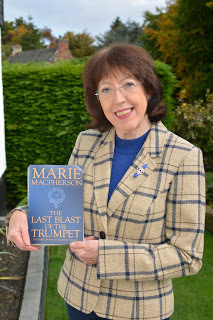
Scottish writer Marie Macpherson grew up in Musselburgh on the site of the Battle of Pinkie and within sight of Fa’side Castle where tales and legends haunted her imagination. She left the Honest Toun to study Russian at Strathclyde University and spent a year in the former Soviet Union to research her PhD thesis on the 19th century Russian writer Mikhail Lermontov, said to be descended from the Scottish poet and seer, Thomas the Rhymer. Though travelled widely, teaching languages and literature from Madrid to Moscow, she has never lost her enthusiasm for the rich history and culture of her native Scotland.
Writing historical fiction combines her academic’s love of research with a passion for storytelling. Exploring the personal relationships and often hidden motivations of historical characters drives her curiosity.
The Knox Trilogy is a fictional biography of the fiery reformer, John Knox, set during the 16th century Scottish Reformation. Prizes and awards include the Martha Hamilton Prize for Creative Writing from Edinburgh University and Writer of the Year 2011 awarded by Tyne & Esk Writers. She is a member of the Historical Writers’ Association (HWA), the Historical Novel Society (HNS) and the Society of Authors (SoA).
Connect with Marie:Website • Twitter • Facebook • Instagram • Publisher
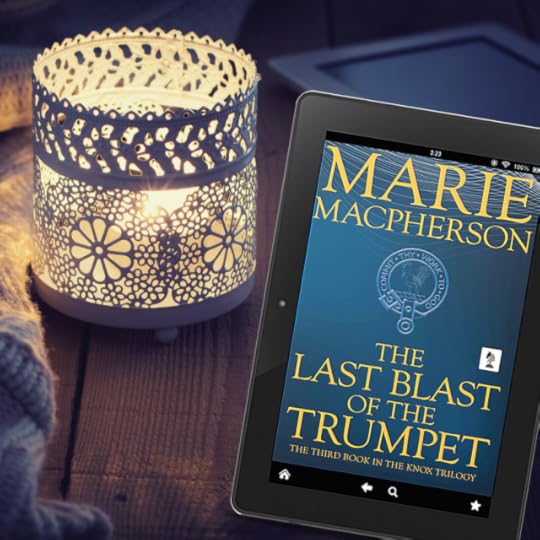
Welcome to Day #8 of the blog tour or The Sign of the Blood (A Dangerous Emperor, Book #1) by Laurence O'Bryan #BlogTour #HistFic @LPOBryan @authorrochelle

THE SIGN OF THE BLOOD(A DANGEROUS EMPEROR, BOOK #1)BY LAURENCE O'BRYAN
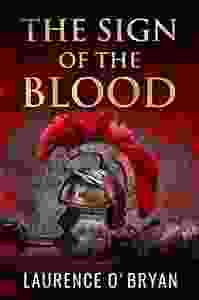

SEPTEMBER 22ND – NOVEMBER 24TH 2020
AMAZON
Publication Date: 22nd November 2018
Publisher: Ardua
Print Length: 469 Pages
Genre: Historical Fiction
The first Christian emperor faces ruthless enemies on his journey to power.
Cool mist settles over the legion advancing toward the Persian army. Constantine, the son of an emperor, the Roman officer leading the attack, tells his men to halt - something is wrong.
Before long, the battle rages. He frees a slave named Juliana. She is half Persian and half Roman. As they are pursued to Britannia over land and sea, he learns that she can see the future - his future.
It is 306A.D., long before Constantine the Great converted to Christianity and became the first Christian emperor.
To ensure he survives, he must eliminate his enemies. But who must die first? The priestess, Sybellina, who joined them in Rome and practices dark and seductive magic? Or the brutal legion commanders who surround his father? Or, as Juliana suspects, are those who want him dead even closer?
A gripping historical novel about Constantine’s bloody rise to power, the woman who helped him, and the real reason he supported a persecuted Christian minority, a decision which changed the world into the one we know.
Head over to The Historical Fiction Blog to find out what Mercedes has to say about this fabulous book!
Click HERE!

Welcome to Day #6 of the blog tour for A Feigned Madness by Tonya Mitchell #HistoricalFiction #BlogTour #CoffeePotBookClub @tremmitchell @CraftygasheadZo

A Feigned Madness
By Tonya Mitchell
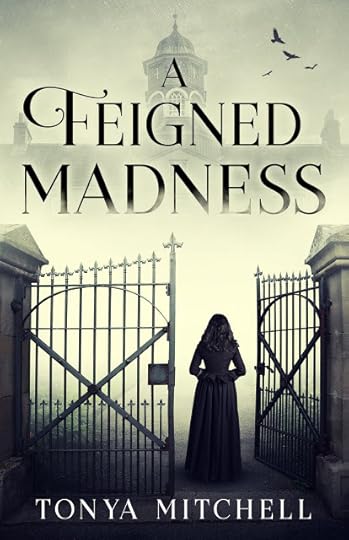
October 6th — December 8th 2020
Publication Date: 6th October 2020Publisher: Cynren Press
Print Length: 392 pages
Genre: Historical Fiction, Historical Thriller
The insane asylum on Blackwell’s Island is a human rat trap. It is easy to get in, but once there it is impossible to get out. —Nellie Bly
Elizabeth Cochrane has a secret.
She isn’t the madwoman with amnesia the doctors and inmates at Blackwell’s Asylum think she is.
In truth, she’s working undercover for the New York World. When the managing editor refuses to hire her because she’s a woman, Elizabeth strikes a deal: in exchange for a job, she’ll impersonate a lunatic to expose a local asylum’s abuses.
When she arrives at the asylum, Elizabeth realizes she must make a decision—is she there merely to bear witness, or to intervene on behalf of the abused inmates? Can she interfere without blowing her cover? As the superintendent of the asylum grows increasingly suspicious, Elizabeth knows her scheme—and her dream of becoming a journalist in New York—is in jeopardy.
A Feigned Madness is a meticulously researched, fictionalized account of the woman who would come to be known as daredevil reporter Nellie Bly. At a time of cutthroat journalism, when newspapers battled for readers at any cost, Bly emerged as one of the first to break through the gender barrier—a woman who would, through her daring exploits, forge a trail for women fighting for their place in the world.
Head over to Zoe's Art, Craft and Life and check out a fabulous review of A Feigned Madness.
Click HERE!
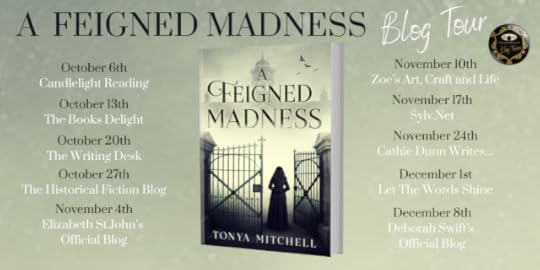
November 9, 2020
#BookReview — All That Glitters by Linda Bennett Pennell #HistoricalFiction #HistoricalSuspense @LindaPennell

By Linda Bennett Pennell
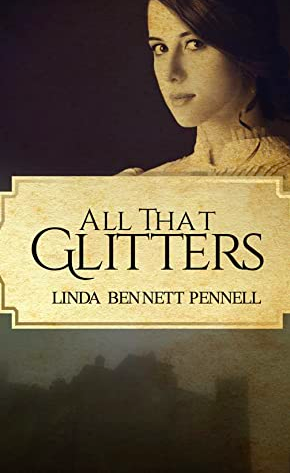
Sometimes we find our true purpose in the most unexpected places.
Becoming governess to a difficult child in a robber baron’s eerie mansion on the Georgia coast is not the life Sarah Anne had envisioned. The cultural clashes between her rural southern upbringing and that of the wealthy northern family send her reeling, but she is determined to be a success. She needs this job for all other doors have closed. Complicating her position are two young men of the family who vie for her attention, engendering emotions that she fights but cannot quell.
With patience and kindness, Sarah Anne breaks through the emotional wall with which her student has surrounded herself. But as her understanding of the family dynamic grows, Sarah Anne comes to realize there may be very good reasons for the child’s troubling behavior. Something is not right within Ripon House. Is the child mentally unbalanced as the father claims, or is the family dead set on protecting a sinister secret no matter the cost?

“Something was terribly wrong at this house…”
Sarah Ann Mercer knew that the moment she stepped through the door. The menacing atmosphere of Ripon House made it feel more like a medieval torture chamber than a loving family home. And then there was the child, Adelia, the little girl who Sarah Ann was meant to teach.
Sarah Ann had expected hostility, especially when Adelia had adored her former governess, but she had not foreseen such anger from a seven-year-old child. Mr Littlewood said the child is mentally unbalanced and that she should be sent to the asylum, but the more time Sarah Ann spends with Adelia, the less certain she is of Mr Littlewood’s assumptions and the more she realises that behind the façade of respectability, the Littlewood family are hiding a terrible secret. A secret which will have consequences for them all…
From the first day of a new job to the discovery of a harrowing truth. All that Glitters by Linda Bennett Pennell is the utterly enthralling story of one young woman who is willing to risk everything to protect the child she has come to love.
The remote manor house, a complicated family history, secrets and an atmosphere of terror and suspense may cause the reader to think they have been thrown into a tautly gripping gothic novel, minus the restless spirit. It certainly has the same ominous feel to it as Jane Austen’s, Northanger Abbey and even Charlotte Brontë’s, Jane Eyre. The mounting tension, the cleverly crafted plot twists, and the sinister passages where we are allowed a glimpse into the antagonist’s mind, but without knowing who the antagonist is, really kept me turning those pages.
I simply adored the characterisation of Sarah Ann. Sarah Ann is a young woman who is determined to make her way in the world. She has dreams and hopes, but her circumstances and the era in which she lives in dictate her narrative. Sarah Ann was a character that I was instantly drawn towards. Her loving nature, her sharp wit and her quick intelligence made her the type of protagonist that a reader could get behind and root for. However, her innocence also meant that at times she finds herself questioning what she has seen, and often seeks confirmation for her own conclusions from her uncle and aunt, which I thought made her realistic in the telling. Sarah Ann is also a woman who is terribly conflicted. She cannot stand being employed by the Littlewoods, but she cannot abandon her charge for fear of what will happen to her. She also has to battle her own emotions when it comes to two members of the Littlewood family. Knowing that she would never be accepted as their equals does not banish the butterflies whenever the two of them are near her, nor does it stop her from dreaming about them. Sarah Ann is a character that I really came to care about. I thought her portrayal was sublime.
Little Adelia stole my heart. She is this beautiful, frightened angel who so desperately wants to be loved. Her desire to be accepted by her parents despite their indifference was utterly heartrending to witness. Adelia is a little girl who just wants to be cuddled by her mother and praised by her father, but instead, she finds herself thrust into the shadows like an unwanted puppy, and told to stay firmly out of sight. It is not so much that children should be seen and not heard in the Littlewood house; it almost seems that it would be for the best if Adelia were not seen at all. One of the most heartbreaking scenes in this book occurred on Christmas morning, where the child’s excitement got the better of her, and she once again finds herself in the firing line of her father’s rage. Her father’s coldness and her mother’s apathy had me reaching for the tissues on several occasions. It is no surprise that Adelia attaches herself to anyone who gives her attention, and thus Sarah Ann becomes a substitute parent in Adelia’s young mind. The trauma that Adelia has to deal with would be enough to traumatise an adult, let alone a child, but she is a courageous, spirited, little girl who, with the right care and attention, would blossom. I thought Adelia’s depiction was absolutely fabulous, and her terrible plight drove this story forward.
Pennell’s exploration of the complicated social position of a governess is explored in great depth throughout this novel. As a governess, Sarah Ann lives between two worlds. She is not a member of the family, but neither is she one of the servants. Sarah Ann’s education, manners and etiquette are that of the aristocracy. However, she is not of the aristocracy, and she should never forget her place—she is but a paid member of staff. She may be able to match the Littlewoods' intellect, but she is not and never will be their equal. However, at times the lines become blurred, and Sarah Ann has to try to find a balance between her moral duties towards the child, the longing of her heart, and keeping her job. I thought Pennell captured the essence of what life was like for a governess in the late 19th Century.
Pennell also explores the lack of control that women had over their lives. The fact that Sarah Ann is also an orphan makes her beholding to the people who raised her, and although she loves them dearly, this is not the life she would have chosen for herself. Even more distressing, however, was the complete lack of protection for a very vulnerable child. The idea that if Mr Littlewood said his daughter was insane, she would therefore be deemed to be so, seems draconian and heartless. So while Sarah Ann can enjoy some limited rights, Adelia has none. I thought this gentle reminder about how very different the lives of women and children were over 100 years ago was very enlightening.
Pennell’s careful use of foreshadowing meant that I knew a storm of monumental destruction was heading towards Ripon House from the very beginning of this remarkable novel, and like Sarah Ann I tried, with the limited knowledge we are given about the antagonist, to figure out who the villain of this tale is. But as I finished this book, I realised that there was more than one antagonist in this tale, and Sarah Ann has to, at one point, stand up to them all. There is no knight in shining armour going to sweep down and save our brave heroine. She is on her own, at least, that is what it seems, but bravery begets bravery, and Sarah Ann finds allies in the most unlikely of places.
All that Glitters by Linda Bennett Pennell is an exceptional work of scholarship. From the historical backdrop to the emotional narrative, this is a book that will keep you reading long into the night.
I Highly Recommend.
Review by Mary Anne Yarde.The Coffee Pot Book Club.
Pick up your copy ofAll That GlittersAmazon UK • Amazon USAdd All That Glitters to your 'to-read' list on
 Goodreads
GoodreadsLinda Bennett Pennell

After being named a finalist in the Writer's League of Texas 2009 Manuscript Contest, Linda Bennett Pennell set her heart on becoming a published author. She experienced the thrill of that dream coming true on July 10, 2013 when her debut novel, Al Capone at the Blanche Hotel, was released by Soul Mate Publishing. She is delighted that the novel has been well received by readers and reviewers alike.
Linda would like to thank those who have read and reviewed Al Capone at the Blanche Hotel. Your wonderful support and generous praise have meant more than mere words can express. It is a great joy that her second and third novels, Confederado do Notre (2014, Soul Mate Publishing), Casablanca: Appointment at Dawn (2015, The Wild Rose Press), Miami Days, Havana Nights (2018, Soul Mate Publishing) have been warmly received, as well. Providing a good experience for readers is what makes all the hard work worthwhile.
Linda is active in writer's groups including the Writer's League of Texas, the Historical Novel Society, Author's Guild, International Thriller Writers, Romance Writers of America, and Northwest Houston RWA.
When she is not busy tapping away on the keyboard on behalf of her latest work-in-progress, Linda enjoys spending time with family and friends, volunteering with various local non-profits and her church, singing with the Texas Master Chorale and church choir, and researching future projects. She resides in the Houston area with her husband and their German Shorthaired Pointer, a dog who is quite certain that he's a little boy.
Connect with Linda:
Website • Twitter • Facebook • Goodreads • Amazon
Publication Date: 5th August 2020
Publisher: Soul Mate Publishing
Page Length: 224 Pages
Genre: Historical Fiction / Historical Suspense

Welcome to Day #2 of the blog tour for Lady Estrid: A Novel of Eleventh Century Denmark by M J Porter #HistoricalFiction #BookReview @coloursofunison @gwendalyn_books

LADY ESTRID: A NOVEL OF ELEVENTH CENTURY DENMARKBY M J PORTER


November 2nd – January 4th
Amazon UK • Amazon US
Publication Date: 29th October 2020
Publisher: Independently Published
Page Length:
Genre: Historical Fiction
Daughter, Sister, Duchess, Aunt. Queen.
United by blood and marriage. Divided by seas. Torn apart by ambition.
Lady Estrid Sweinsdottir has returned from Kiev, her first husband dead after only a few months of marriage. Her future will be decided by her father, King Swein of Denmark, or will it?
A member of the ruling House of Gorm, Estrid might not be eligible to rule, as her older two brothers, but her worth is in more than her ability to marry and provide heirs for a husband, for her loyalty is beyond question.
With a family as divided and powerful as hers, stretching from England to Norway to the land of the Svear, she must do all she can to ensure Denmark remains under the control of her father’s descendants, no matter the raging seas and boiling ambition that threatens to imperil all.
Head over to Gwendalyn's Books where you can check out a fabulous review of Lady Estrid.
Click HERE!

Welcome to Day #5 of the blog tour for The Last Blast of the Trumpet (Book 3 of the Knox Trilogy) by Marie Macpherson #HistoricalFiction #CoffeePotBookClub @Scotscrieve @PenmorePress1 @swiftstory

The Last Blast of the Trumpet
(Book 3 of the Knox Trilogy)
By Marie Macpherson
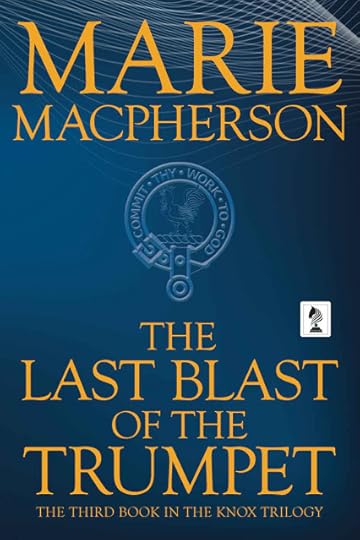
October 12th – December 14th 2020
Amazon UK • Amazon US • Barnes and Noble
Publication Date: 24 August 2020
Publisher: Penmore Press
Series: The Knox Trilogy
Print Length: 409 Pages
Genre: Historical Fiction / Biographical Fiction
Conflict, Chaos and Corruption in Reformation Scotland.
He wants to reform Scotland, but his enemies will stop at nothing to prevent him.
Scotland 1559: Fiery reformer John Knox returns to a Scotland on the brink of civil war. Victorious, he feels confident of his place leading the reform until the charismatic young widow, Mary Queen of Scots returns to claim her throne. She challenges his position and initiates a ferocious battle of wills as they strive to win the hearts and minds of the Scots. But the treachery and jealousy that surrounds them both as they make critical choices in their public and private lives has dangerous consequences that neither of them can imagine.
In this final instalment of the trilogy of the fiery reformer John Knox, Macpherson tells the story of a man and a queen at one of the most critical phases of Scottish history.

Scottish writer Marie Macpherson grew up in Musselburgh on the site of the Battle of Pinkie and within sight of Fa’side Castle where tales and legends haunted her imagination. She left the Honest Toun to study Russian at Strathclyde University and spent a year in the former Soviet Union to research her PhD thesis on the 19th century Russian writer Mikhail Lermontov, said to be descended from the Scottish poet and seer, Thomas the Rhymer. Though travelled widely, teaching languages and literature from Madrid to Moscow, she has never lost her enthusiasm for the rich history and culture of her native Scotland.
Writing historical fiction combines her academic’s love of research with a passion for storytelling. Exploring the personal relationships and often hidden motivations of historical characters drives her curiosity.
The Knox Trilogy is a fictional biography of the fiery reformer, John Knox, set during the 16th century Scottish Reformation. Prizes and awards include the Martha Hamilton Prize for Creative Writing from Edinburgh University and Writer of the Year 2011 awarded by Tyne & Esk Writers. She is a member of the Historical Writers’ Association (HWA), the Historical Novel Society (HNS) and the Society of Authors (SoA).
Head over to Deborah Swift's Official Blog for a sneak-peek between the covers of The Last Blast Of The Trumpet
Click HERE!

Welcome to Day #7 of the blog tour for The Queen's Almoner by Tonya Ulynn Brown #HistoricalFiction #TheQueensAlmoner #BlogTour @MrsBrownee2U @ADarnGoodRead

The Queen's Almoner
By Tonya Ulynn Brown

SEPTEMBER 28TH – 30TH NOVEMBER 2020AMAZON UK • AMAZON US • BARNES AND NOBLE
Publication Date: June 30, 2020
Publisher: Late November Literary
Print Length: 320 Pages
Genre: Historical Fiction
Sometimes loyalty to the queen comes at a cost.
Thomas Broune is a Reformer and childhood friend of the young queen, Mary Stuart. When Mary embarks on a new life in her estranged homeland of Scotland, Thomas is there to greet her and offer his renewed friendship. But the long-time friends grow closer, and Thomas realizes his innocent friendship has grown into something more. Yet he is a man of the cloth. Mary is the queen of the Scots. Both of them have obligations of an overwhelming magnitude: he to his conscience and she to her throne.
When he must choose between loyalty to his queen or his quiet life away from her court, he finds that the choice comes at a high price. Driven by a sense of obligation to protect those he loves, and crippled by his inability to do so, Thomas must come to terms with the choices he has made and find a peace that will finally lay his failures to rest.
Today we are over on A Darn Good Read for a book review!
Click HERE!

November 6, 2020
Check out Allan Martin's fabulous book — Death in Tallinn #kindlecountdown #HistoricalThriller #HistoricalCrime @AllanMartinAuth

Death in Tallinn
By Allan Martin

Tallinn, March 1933
Estonia, a small country trying to survive - caught between the jaws of Germany and Russia.
And political crisis looms when a senior policeman is found impaled on the roof of a kiosk.
Chief Inspector Jüri Hallmets, former schoolteacher and veteran of Estonia’s struggle for independence, builds a team to investigate the crime. His political masters demand a quick and easy resolution to the case. But Hallmets has principles.
Two journalists are looking into the case too, but their curiosity could prove their own worst enemy. Their fates become entwined with Hallmets’ investigation.
And as Hallmets finds himself in a race against time, he uncovers a network of illegal activities.
After a bloody shoot-out, a plot unfolds which will threaten Estonia’s fragile democracy.
Praise for Death in Tallinn
“Allan Martin’s writing is a masterclass in crime fiction.”
Marion Todd.
Allan Martin grabs you with the first sentence and doesn’t let go until the last page. Death in Tallinn is a tense thriller with compelling characters set against a fascinating, well-researched backdrop."
Len Maynard, author of the DCI Jack Callum Mysteries and the Harry Beck thrillers.
“This atmospheric crime novel set on Islay gripped me from the start. Decades-old crimes cast long shadows.”
Sarah Ward
“A mystery so redolent of its island setting that you practically smell the peat and whisky on the pages.”
Douglas Skelton
Pick up your copy of
Death in Tallinn
Add Death in Tallinn to your 'to-read' list on

Allan Martin

I’ve worked as a schoolteacher, teacher-trainer and university lecturer. I took early retirement when I was sixty and have never looked back. I live just north of Glasgow with my wife Vivien, who’s also a writer. We like visiting different parts of Scotland, and also regularly visit Germany and Estonia.
Connect with Allan:
Publisher: Sharpe Books
Page Length: 341 Pages
Genre: Historical Thriller / Historical Crime
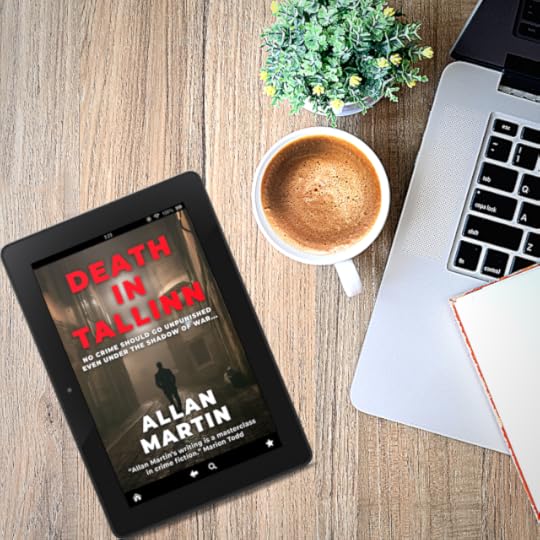
November 5, 2020
Join me in conversation with author, John Kennedy #Crime #Thriller #kindlecountdown @JohnKen_writer

Join me in Conversation with author John Kennedy

Mary Anne: A huge congratulations on your debut novel, The Trauma Pool. Could you tell us a little about your book and how you came to write it?
 John Kennedy: Yes, thank you very much. It’s nice
John Kennedy: Yes, thank you very much. It’s nice to be able to talk about it to people other than myself!
It’s basically a crime fiction novel with elements of police procedural, the first in a series set in 1980s West Yorkshire. Detective Will Ashcroft, traumatised after working on a disturbing case in London, returns to the north where he meets a young, black policewoman suffering prejudice in and outside the force. They are both marginalised, but when the unexplained death of a teacher and the disappearance of a 12-year old are linked, the two detectives become the missing boy’s best hope of survival.
I came to write it because I wanted to explore the idea of people forced to the margins, by organisations, by backward thinking, and I suppose by our inability to truly bury the past. And, of course, I wanted to tell a gripping story at the same time.

Mary Anne: The Trauma Pool is a gripping murder mystery, what drew you to write in this genre?
John Kennedy: The genre chose itself really. I mean, I’ve written in other genres, I have some sci-fi stories published and I wrote a contemporary fiction novel which never saw the light of day and probably never will. But then someone gave me a valuable piece of advice – choose a genre and aim yourself at it like a cruise missile. I’d always loved Crime – I think it’s a genre with everything; death, love, sacrifice, ambition, betrayal, greed, tragedy… all the Shakespearian themes are present. I’m not saying the Bard would be writing crime were he around today, but…
Mary Anne: How did you come up with your setting, and your characters?
John Kennedy: The setting was really important. The 1980s is an era that hasn’t been explored too excessively, in Crime Fiction anyway, and I just loved the idea of utilising that decade because in many ways it’s right on the edge of modern sensibility and understanding. People were starting to recognise mental illness to some extent, they were starting to talk about equality, race and gender but it was all tentative at best. Not that we’ve got everything right thirty-odd years later; we haven’t, clearly. But we’ve certainly come a long way in the right direction.
In terms of place, it was a no-brainer for me really. I was brought up in West Yorkshire and there’s a lovely rugged hardness to the moors and crags and to the people. For a story about marginalisation, of being pushed to the edges, I can think of nowhere better, nowhere that epitomises isolation and disconnection quite so vividly. But with a gritty seam of humour running just under the surface.

To some extent, characters appear to me after the theme and the general story has percolated a little bit. Once you know the subtext and the story you want to tell, the characters form almost by themselves, I think. The bones of them, anyway. The hard work is in adding the flesh, asking yourself a thousand questions about their likes, dislikes, dreams, memories and motivations. After a while, the answers start appearing by themselves… and that’s when the characters start speaking to you, if you’re lucky. And then, suddenly, you don’t have to ask yourself how they’d act or what they’d say in a given situation because it just trips from your fingertips.
Mary Anne: What do you think is the most challenging aspect of writing quality fiction?
John Kennedy: Hmm. That’s the question isn’t it? Quality being the key word there. if you’re working within the constraints of a genre, then there are certain rules you just have to obey. But that doesn’t mean you can’t stretch the fabric a little. For me, I really want this series to be believable, with characters suffering real-world problems, but at the same time it is crime fiction and it has to find and entertain an audience. The real challenge is in producing something that avoids the clichés, something original enough to be yours, but at the same time recognisable enough to sit alongside whomever on that shelf…
But there’s plenty scope. Plenty that hasn’t been done. Or at least hasn’t been done in quite the way that you, and only you, can do it. I fervently believe that.
Mary Anne: What advice do you have for aspiring authors?
John Kennedy: Other than the cruise missile thing… I think the most valuable piece of advice I could pass on is an acceptance that writing truly is rewriting. It’s the thing that people often don’t get until they’ve been through it. Unless you’re an absolute genius, and maybe even then, finishing a first draft of something means you’re maybe a third or half of the way there. You’ll have to leave it alone for a few months. Come back to it and read it with fresh eyes. Move things around, throw bits out, maybe even start all over again. And I don’t just mean tweaking. There will likely be restructuring, whole sections that don’t belong and need replacing. And so it goes. Probably at least as long as you’ve spent on the first draft will be spent doing all this. Then, you can start tweaking and editing.

And I’m sure there will be people reading this who’ll think, ‘Yeah, but that doesn’t apply to me because my writing is special…’ It may well be, but that doesn’t change anything. It’s just the way it is.
But it shouldn’t put you off. Once you realise that it’s all part of the process, you can relax and enjoy it. Because the rewriting and eventual fine tuning is just as much fun as the initial drafting, maybe more so. To paraphrase Hemingway, the first draft of everything is a mess.
Transforming that mess into something truthful (your truth, the truth you were initially trying to say) and beautiful (beautiful because it’s yours) is immensely enjoyable.
So, embrace it, love it, but most of all… go and get on with it!
Mary Anne: It has been so lovely chatting with your today!
If you would like to learn more about John's fabulous book then you know what to do SCROLL DOWN!
The Trauma Pool
By John Kennedy

DI Will Ashcroft saved a boy from drowning in the London Docklands. But the incident still haunts him.
Now Ashcroft is back in the Pennines, where he started out.
There has been a murder – and a twelve-year-old boy is missing.
The deeper Ashcroft delves into the crimes, the clearer it becomes that he cannot solve the cases on his own.
Samira Byrne is a black police officer, battling against prejudice both in and outside the force. Yet she is smart and tenacious – and becomes an ally.
Faced with incompetent superior officers, witnesses who are withholding information, and the suspicious behaviour of the missing boy’s parents, Ashcroft and Byrne must risk everything to unravel secrets the valley has been keeping for over ten years.
Can Ashcroft outrun his past long enough to solve the cases?
Excerpt
The crags were blotted with rain and the line of towns they protected were black holes. Nothing much escaped; light, youth and kindness spending itself on these wet valley walls daily. But blame was wasted because he knew it wasn’t the place. Not really. It was him and what he carried that blocked the light.
DI Will Ashcroft swung down into the valley and parked by the portacabin at the edge of the factory grounds.
Too many cars, he thought. Junior officers would spill brandy-laced tea from flasks and grind cigarette butts all over the scene. Later there’d be visits from at least one Superintendent and other seniors who’d do much the same. By the end of tonight, the chances of finding anything useful would be slim as a famished moor-rat.
He adjusted the mirror and put a hand through his unruly hair, trying to loosen his shoulders. He shut the car door, hauling his combat jacket over his wiry frame. The rain had stopped but it was cold for May. His eyes flickered upwards at the misshapen tower sticking out from the distant trees; a local folly, fashioned by a madman with too much time, too much love, too much something.
A sergeant and constable waved him through the gate and two reporters, one greying and bearded, another with a copper-coloured mullet, turned to check him out. Only a few hours since the body was found, so they were sharp for small-towners. Mullet raised his camera and clicked. ‘Can you tell us anything?’
Will shook his head. ‘I’m not the SIO.’
The rugged path wound round the cabin through the trees. He hunched, droplets catching his neck. The leaves gave way to a fence, graffiti covered; a muted yawp of the topical, Keegan Rules! Save the miners, and the less topical, from at least five years ago, Up yours Argies! Falklands ours!
Local kids had always hung out here, he remembered, shinning over to drink cheap cider or get stoned. But tonight, they’d stumbled across more than wilted condoms and discarded porn. Even off their heads, they’d been scared enough to report it to the night-watchman. They’d be in the portacabin now, finishing their statements.
The coal-mound nosed up in front of him. Halfway up, two constables and an overweight, middle-aged, uniformed sergeant were trying to erect a frame, laughing, capering. Will watched a few seconds before clearing his throat. The sergeant stepped over the barrier, stumbled and slid down the mound, bloodshot eyes on Will, broken veins at his cheeks spreading along with a smile with no pretence at warmth. ‘Thought you’d moved down London years ago, Sergeant.’
‘I’m a DI now.’ Will watched one constable prodding the other with a tent-pole. ‘Grundy, don’t you think we’d be better off just laying a tarp over the body. No point setting up a tent on top of that.’
Grundy scratched his reddening ear like a pantomime policeman. He flashed yellowed teeth at Will and walked away, shaking his head, muttering, waving them down the coal mound.
Will did a full circuit of the stack, waiting for them to pick up all their rods and get out of his way. They took their time and he felt their glances, sharp as granite. Their talk was fast, clipped by choked-back laughs, Grundy filling them in, no doubt. Who Will was. What he’d done. He heard a ‘That was him?’ and one of the PCs stared now; a cold mix of awe and derision.
Finally they shuffled down and he climbed, hands outward for balance. He glanced at the sky, the fading light of a spring evening; not the best.
The body was face-up, arms spread wide; middle-aged, maybe late forties, a face that might have once been striking. Unshaven, maybe four days’ growth. A beefy frame gone to flab. Medium length jacket over brown suit-trousers, torn in two places and a once white shirt, grimed almost to grey.
Like he’d been put through his paces.
The arms were interesting. It would have taken some extra effort to place them like that; spread wide to the skies. Will glanced back beyond the trees. It was good the Press hadn’t been let in. All kinds of meanings could be attached to the positioning, but ‘take me with you’ would really stir up the crazies.
He leant in closer to the trouser legs. There were purple specks caught in the weave. Heather? He glanced up past the dark valley walls towards the moor.
He leant back on his haunches. The SOCO had looked already, of course, heart attack as apparent cause of death, the word misadventure already filtering through the radio to Will as he’d driven over from Leeds. Still. It was all in the detail. He grimaced, bent forward, manoeuvring himself so that he could lift the head with both hands. Too early for Rigor so no resistance, but something slippery spread on his fingers. Jelly? On the underside, untouched by rain. He squinted down the collar, easing the head up. The neck was raw and pink and scalp was showing, a fair portion of the hair having fallen from blistered skin in two-inch circular patches. Coal dust coated the pink flesh, and he tasted sudden bile and sucked in some air.
Pick up your copy of
The Trauma Pool
Add The Trauma Pool to your 'to-read' list on
 Goodreads
Goodreads
John Kennedy

John Kennedy lectures English at a college in the North of England. He has a Masters’ in Creative Writing. He’s been shortlisted for the Crime Writers Association Debut Dagger and the Exeter prize and longlisted for the Bath Novel prize. The Trauma Pool is his first novel.
Connect with John:
Book Title: The Trauma PoolAuthor: John KennedyPublication Date: September 22nd 2020Publisher: Sharpe BooksPage Length: 329 PagesGenre: Thriller

The Coffee Pot Book Club
...more
- Mary Anne Yarde's profile
- 159 followers



